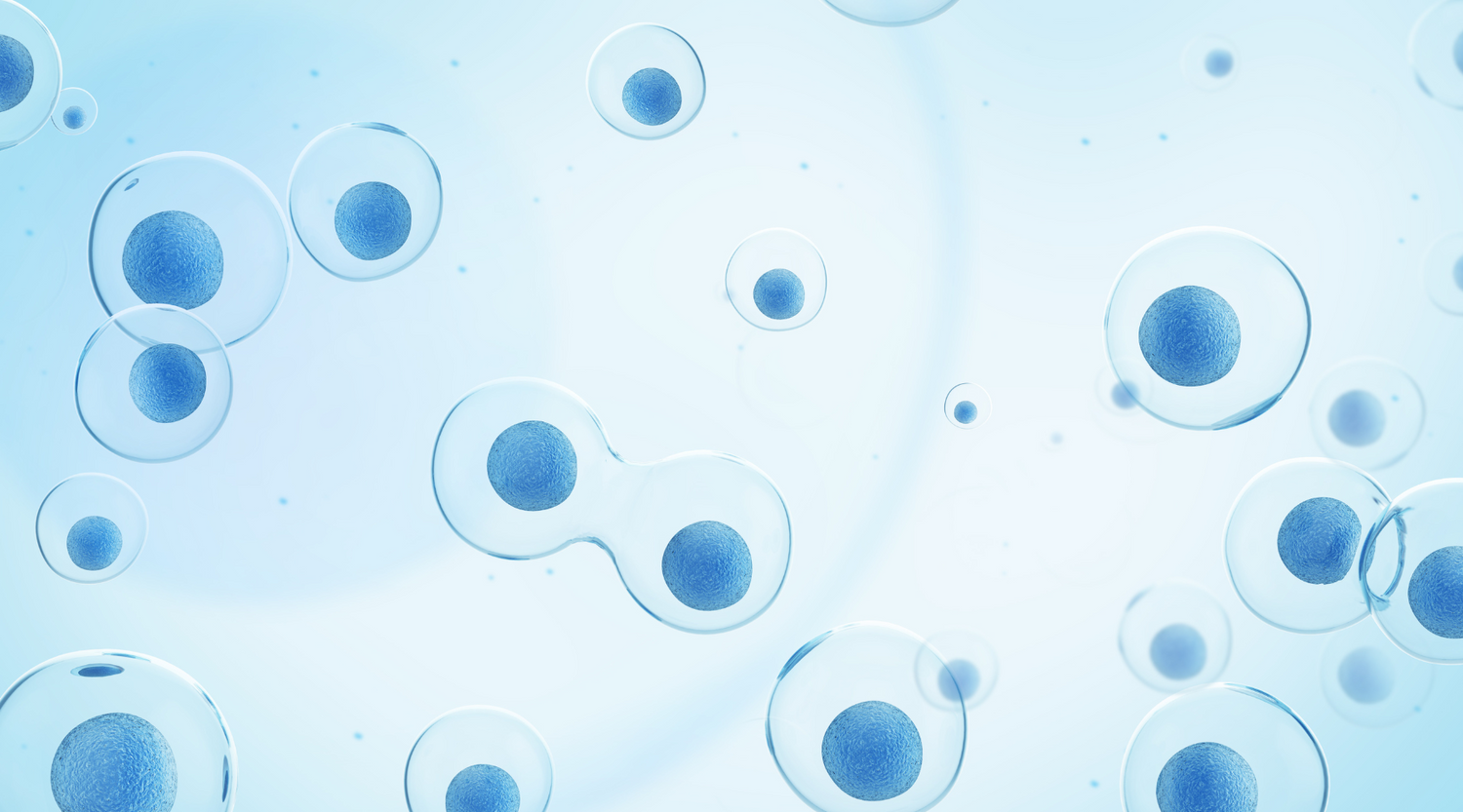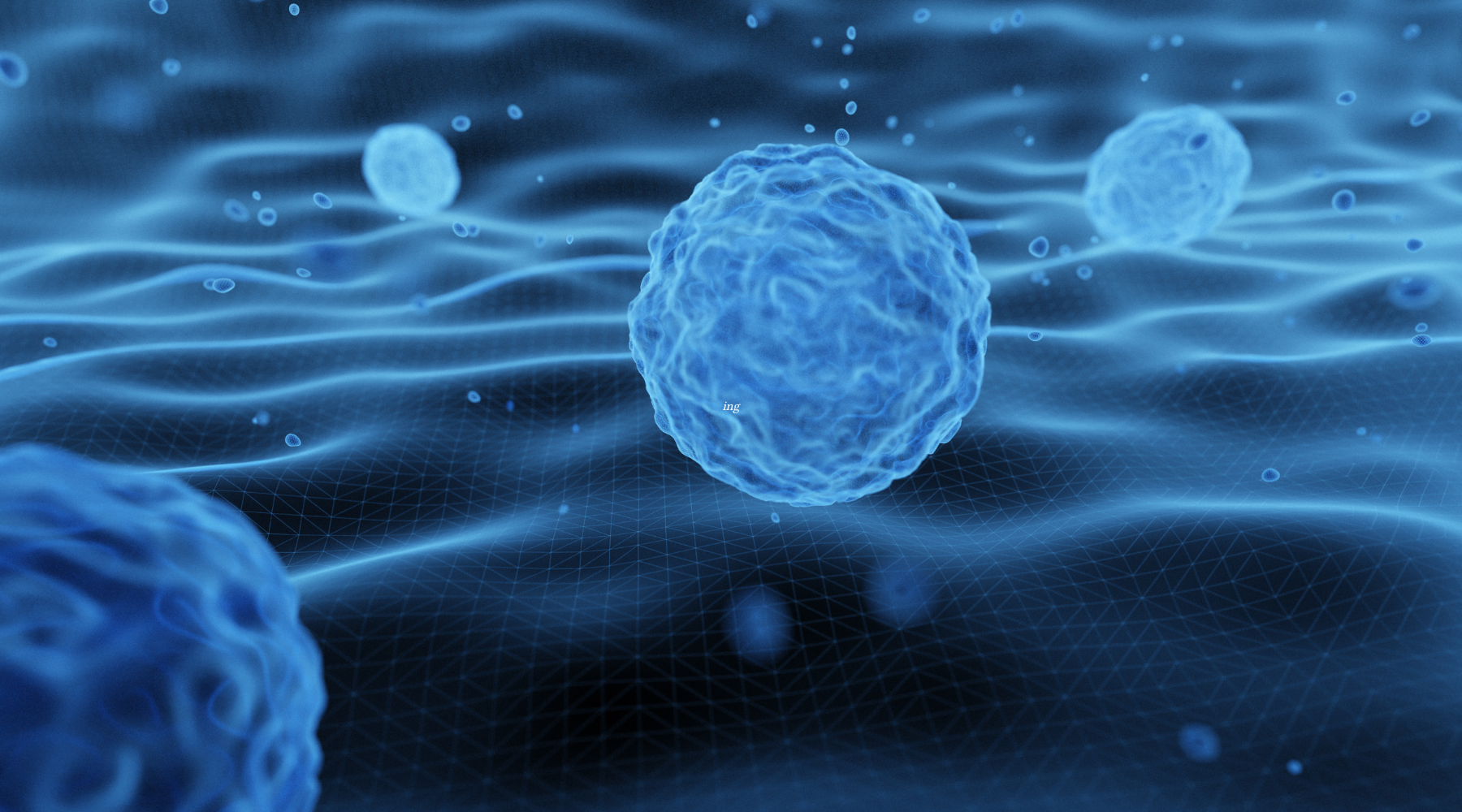Repair + Renew < Regrow
The latest anti-aging skincare product might promise to repair, renew, and rejuvenate, however, they don’t promise to regrow. Only your stem cells can do that; but this is actually what you need most.
Stem Cells & Your Skin
Skin is regenerated or regrown quite often through the division of stem cells. The ability to regrow or create more skin cells exist to protect the body in case of accident or injury; imagine, for example, if you got a scratch that never healed and what havoc that would introduce to the body. Skin is among the most regrown tissues, but all tissues and organs in the body need to replace cells as part of their repair processes. Each organ has its own strategy for repair and renewal.
Replacing Cells
You’ll remember from earlier hallmarks of aging that when cells have reached their replicative limit or are sufficiently damaged, they enter a state of senescence or are marked for apoptosis (cell death). This response is important to keep nearby cells and whole tissues and organs healthy. But the cells lost need to be replaced or regenerated. There are a couple of mechanisms to generate these cells: using stem cells or de-differentiating and reprogramming a nearby cell to a multi- or pluripotent state.
Types of Stem Cells
Stem cells can be employed to divide and create many more cells. There are two main types of stems cells: embryonic stem cells and adult stem cells. Embryonic stem cells are pluripotent, meaning that they can become any cell type; like the name suggests, they are sourced from embryos.
Adults don’t have these pluripotent cells. Instead, they have adult stem cells, which are multipotent or even unipotent. Multipotent means they can make many different types of cells (but not all types); and unipotent means they can make many of one type of cell. For example, a skin stem cell is multipotent and can be induced to create many kinds of skin and hair cells. There are many niches or locations of skin stem cells around the body.
Differentiated Cells
A skin cell is an example of a differentiated cell; it has a particular job and belongs to a particular tissue. Skin cells, as you can imagine, are different from heart cells, which are, in turn, different from liver cells.
Reprogramming Differentiated Cells
In their 2023 iteration of the Hallmarks of aging, Lopez-Otin et al spend only a few lines explaining the role of stem cells in skin, for example, in regrowing lost cells. Instead, they give much of the page to the creation of multipotent cells via a process they refer to as reprogramming.
Reprogramming takes a differentiated cell, like a skin cell and de-differentiates it—removing the specific characteristics or phenotype of skin cells, for example, and reactivating pluripotency genes. Full reprogramming implies both a change of cellular identity but also rejuvenation; among the characteristics observed of fully reprogrammed cells are extension of telomeres and resetting of the DNA methylation clock. They deem this process of higher importance for the aging process than cell generation from stem cells.
Stem cells and Aging
As we age, we lose this ability to turn differentiated cells into stem cells and stem cell decline emerges (in number and function) as the integrative consequence of multiple types of cell damage, discussed presently, and overuse or “exhaustion.” Both hamper our ability to regrow cells and maintain the health of our tissues.
For this reason, stem cell damage and exhaustion is considered an integrative hallmark of aging. The integrative hallmarks arise when the accumulated damage caused by the primary and antagonistic hallmarks cannot be compensated by the cell’s mechanisms to promote homeostasis. Integrative hallmarks lead to further deterioration of cells that are ultimately responsible for aging.
Stem Cell Damage
Just like the differentiated cells discussed in each of the Hallmarks of Aging blogs, stem cells are impacted by accumulation of DNA damage, impaired proteostasis, and mitochondrial dysfunction. For example, proteostasis, and the maintenance of autophagic activity in particular, has been found to be an important player in both adult and embryonic stem cell maintenance.
In the best case scenario, when enough damage accumulates in stem cells they are removed from the stem cell pool by entering a state of senescence, undergoing apoptosis, or permanently differentiating. In a worst case scenario, these damaged cells continue to replicate, passing on their damage to the generated cells; or, still worse, they replicate continuously and become cancerous.
Maintaining Healthy Stem Cells
Unfortunately, due to the integrative nature of stem cell exhaustion (it is impacted by all of the other hallmarks of aging), maintaining healthy stem cells (and organs) isn’t as simple as buying the latest anti-aging cream. (Although, if we were to recommend an anti-aging cream, it would be sunscreen.) But, like most of the hallmarks discussed so far, living healthfully can prevent and slow the accumulation of DNA damage and introducing autophagy-inducing methods like regular fasting and spermidine can mitigate some of the impact of impaired proteostasis and mitochondrial dysfunction, for example.
Written by: Katsume Stoneham, BS, Molecular Biology, MA, Public Health




Leave a comment
All comments are moderated before being published.
This site is protected by hCaptcha and the hCaptcha Privacy Policy and Terms of Service apply.